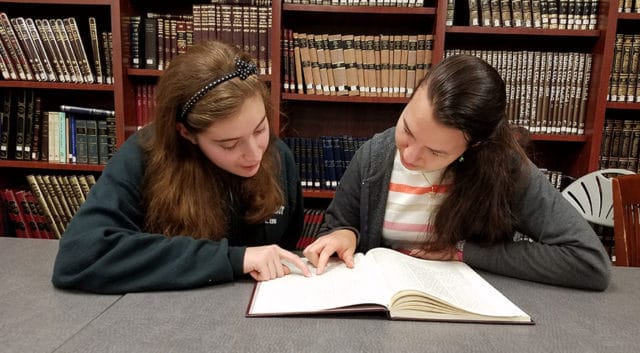Jack Bieler
I have followed The Lehrhaus discussion regarding women’s Talmud study, beginning with Rabbi Saul Berman’s recollections upon the fortieth anniversary of Rabbi Joseph B. Soloveitchik’s lecture at Stern College for Women. As someone who has championed women’s gemara study throughout my day school and synagogue career, it was an opportunity to gain some context of the field and where things stand today.
Even though a number of respondents are well-known and experienced educators on different levels of Jewish education, it was interesting to me to note that the discussion has not at all taken into consideration the different levels of interest and ability reflected in a typical day school’s student body.
I believe, similar to Rivka Kahan, that studying personally appropriate subject matter is not only an issue that affects women, but men, as well. Just as many boys for one reason or another find it difficult to enthusiastically and deeply appreciate Talmud, there are girls who most probably would thrive were more Talmud included in their courses of study.
In other words, a fundamental question that this topic engenders is: is every student equipped or even motivated to focus on “Lomdus,” as Rabbi Ezra Schwartz put it, or “advanced, serious Talmud study” as others have stated? If the principle of “hanokh le-na’ar al pi darko” (Proverbs 22:6)—educate the youth in accordance with “where he is at”—is to be properly followed, then a uniform Jewish studies curriculum including intense amounts of high level analysis of talmudic sources, will simply not engage all students equally.
In contrast to yeshivot, seminaries, and collegiate environments, where the population is often self-selected and therefore highly motivated, even denominational high schools in the United States draw a heterogeneous collection of students, and usually depend on a broad student body to finance their operations.
Furthermore, Jewish high schools are made up—for the most part—of survey courses in which students can sample different subject matter, approaches, and teaching methods. While there are honors classes, nevertheless—as has been pointed out in several of the essays—the amount of time devoted to individual subjects even in these classes is usually insufficient to allow for high-level mastery.
The high school experience assumes that a student will only be able to truly specialize within the context of extracurricular activities, what she or he does during spare time, weekends, and vacations, and during his/her post-secondary educational life.
In one of the schools in which I worked which had separate classes in Jewish studies, girls were never afforded the same quantitative opportunities as boys. The extra Talmud period that was added for boys—usually replacing either Navi or Hebrew language classes—was not an option offered to girls. In another school in which I taught, the opportunities for boys and girls in honors Talmud study were the same but the total number of hours simply were insufficient for them to achieve significant Talmud acumen. As for my synagogue, I explicitly opposed single-sex Shiurim or learning opportunities, feeling that it was important to make the statement to all that anyone was welcome at these venues, including all Talmud presentations.
The option for women’s Talmud study is an option that must exist and it should begin as early as possible to allow those interested to study on an advanced level, if that is their inclination and deep desire. We need not be concerned that the number of individuals who take advantage of such opportunities may be small, or that the sound of the beit midrash—assuming that it is single-sex—will not be as strong as an all-men’s study setting.
What is of greatest importance, in my opinion, is that choice is made available so that every individual can find his/her place within Torah learning, whatever form it may take.





![Yom Yerushalayim: On Not Yet, Always Already, and the [Im]possibility of Crossing Over](https://thelehrhaus.com/wp-content/uploads/2025/05/The_Kotel_23908738216-238x178.jpg)




 Site Operations and Technology by The Berman Consulting Group.
Site Operations and Technology by The Berman Consulting Group.